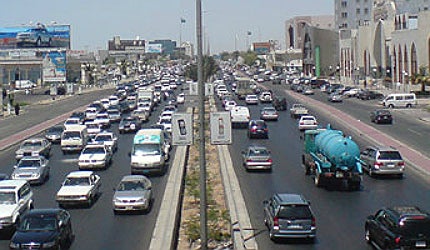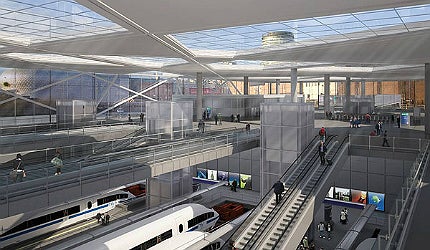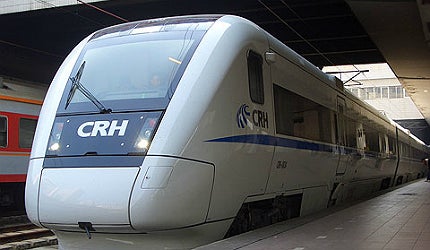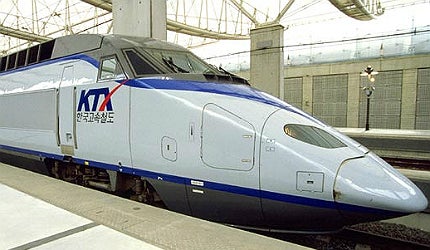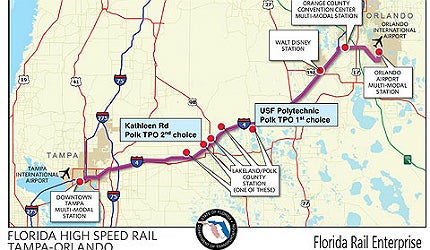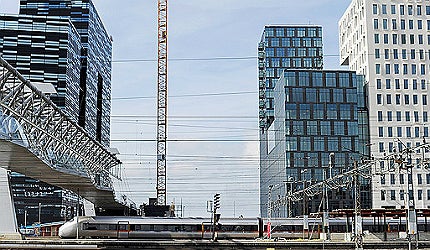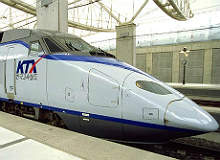
At the 8th World Congress on High Speed Rail to be held in Philadelphia from 10-13 July 2012, transport specialists and policy-makers from all corners of the world will be debating the future of high-speed railways, particularly in the context of a global economy which is struggling to find the money for such large infrastructure projects.
Despite the general air of financial anxiety, there are a number of impressive high-speed projects in various stages of development, from China to the US. The proponents of these lines are attempting to push them through as a source of economic growth in tough times.

Discover B2B Marketing That Performs
Combine business intelligence and editorial excellence to reach engaged professionals across 36 leading media platforms.
While public backlashes and a lack of funding could delay or even cancel these projects, here we present some of the biggest and most advanced in-development high-speed lines, which could make up the vanguard of high-speed rail’s next generation.
California high-speed rail network, United States
Viaducts will be incorporated into the new line to keep the gradient profile as flat as possible
California’s planned rail line is one of the projects leading the charge on US high-speed technology. This 800-mile, $68bn high-speed rail network would eventually link San Diego in southern California with the San Francisco Bay Area in the north.

US Tariffs are shifting - will you react or anticipate?
Don’t let policy changes catch you off guard. Stay proactive with real-time data and expert analysis.
By GlobalDataThe project, which aims to run from Los Angeles to San Francisco in its first phase, would reach intercity speeds of up to 200mph and cut the journey times between the two cities by up to two and a half hours. However, the project has proved controversial, with a recent lack of support from the Californian public casting doubt on its completion.
Read about the full California high-speed rail network project here.
Haramain high-speed railway project, Saudi Arabia
With a high volume of pilgrims visiting Mecca, a new form of transport was required, so the Haramain project was conceived
The Saudi Railway Organisation’s Haramain high-speed rail project is set to run to a length of 450km between the holy cities of Medina and Mecca in Saudi Arabia, greatly increasing passenger capacity and reducing travel times between these two hubs of pilgrimage and religious tourism.
The line, which is now moving into its second phase of construction, is scheduled for completion in 2014.
The project is making use of advanced high-speed rolling stock from Alstom, and will be served by five ultra-modern passenger stations – one each in Mecca and Medina, as well as two stations in Jeddah and one at King Abdul Aziz International Airport, to cater to international travellers.
Read about the full Haramain high-speed railway project here.
High-Speed 2 (HS2), United Kingdom
Graphical image of Birmingham Curzon Street station interior
While the High-Speed 1 link to the Channel Tunnel represented the UK’s first foray into high-speed rail, the much-debated High-Speed 2 project is a high-speed line which could span the length of England, with its Y-shaped network moving north from London to reach Birmingham, Manchester and Leeds, with a total of 330 miles of high-speed lines being installed (capable of supporting speeds of up to 250mph) if it is completed fully.
Given the scale and scope of the project, there are still many stages of consultation, parliamentary approval and detailed design work to be done, but developer High Speed 2 Ltd has predicted that construction work on the London-Birmingham route could begin by 2018, with this initial section estimated for opening by 2026.
Read about the full High-Speed 2 (HS2) project here.
Hefei-Fuzhou high-speed rail line, China
The Hefei-Fuzhou rail route connects central China to south-east China
With its national high-speed rail network on track to reach 16,000 miles by the end of 2015, China is indisputably the global hub for large-scale high-speed rail development.
The Hefei-Fuzhou line, slated for completion in 2014, typifies the scale of China’s high-speed ambition. This 806km, $16.9bn project will make up an important section of the larger Beijing-Fuzhou route, and will reduce the travel time between Hefei and Fuzhou from 14 hours to just four.
Upon completion, the Hefei-Fuzhou line will join Beijing-Tianjin, Wuhan-Guangzhou and Zhengzhou-Xi’an to become China’s fourth high-speed rail line, designed to run at speeds of 250kmph on a two-wired, electrified standard gauge track.
Read about the full Hefei-Fuzhou high-speed rail line project here.
Argentine high-speed railway, Argentina
Construction of the high-speed line will connect three of Argentina’s main cities
Extensive privatisation has led to a distinct lack of passenger rail in Argentina, an issue it shares in common with several other South American countries. It’s a problem that the Argentine Government intends to solve with large-scale projects such as the proposed Argentine high-speed project, a 710km line with a projected cost of $4bn.
The first phase of the project would connect the 310km from Buenos Aires to Rosario, with another 400km section proposed for Rosario-Cordoba. Despite the high potential of the project, it has stalled somewhat in the face of the financial crisis and criticism that it is diverting funds away from the overcrowded Buenos Aires metropolitan rail service.
Read about the full Argentine high-speed railway project here.
Florida high-speed railway, United States
The first phase of the Florida HSR will connect Tampa and Orlando
Along with California, Florida is another state that has benefited from the US federal government’s allocation of high-speed rail funds as part of the American Recovery and Reinvestment Act of 2009. The proposed line would link Tampa and Orlando in the middle of the state with Miami on its southern coastline. The aim for the project has been to tempt Americans off the road by offering a 168mph, 60-minute rail trip as an alternative to a 90-minute journey by car.
Unfortunately, another trait which the Florida high-speed project shares with its Californian counterpart is a troubled development history, as state governor Rick Scott rejected federal funds to start building the line in February 2011, due to cost concerns, essentially cancelling the project for the time being, with further development and re-planning ongoing.
Read about the full Florida high-speed railway project here.
Follo high-speed rail line, Norway
The Follo Line is a high-speed railway double-track line between Oslo and Ski in Norway
At just 14 miles, Norway’s Follo high-speed rail line, which will connect Oslo with the town of Ski via a double-track line, seems comparatively modest. But 12 miles of the line will run through a single tunnel, an enormous engineering task that will create the longest railway tunnel in the country.
The project, due to start construction in 2014 with a projected completion date of 2020, is also a key enabler for further high-speed development in Norway. The capacity and ridership increases afforded by the new line, which will reduce journey times between Ski and Oslo from 22 to 11 minutes, are essential before a high-speed upgrade on the parallel Østfold Line.
Read about the full Follo high-speed rail line project here.



